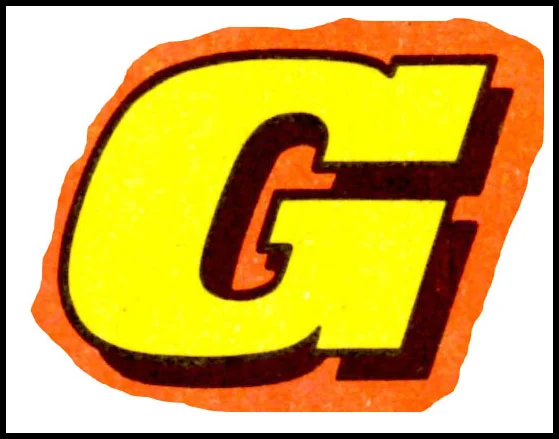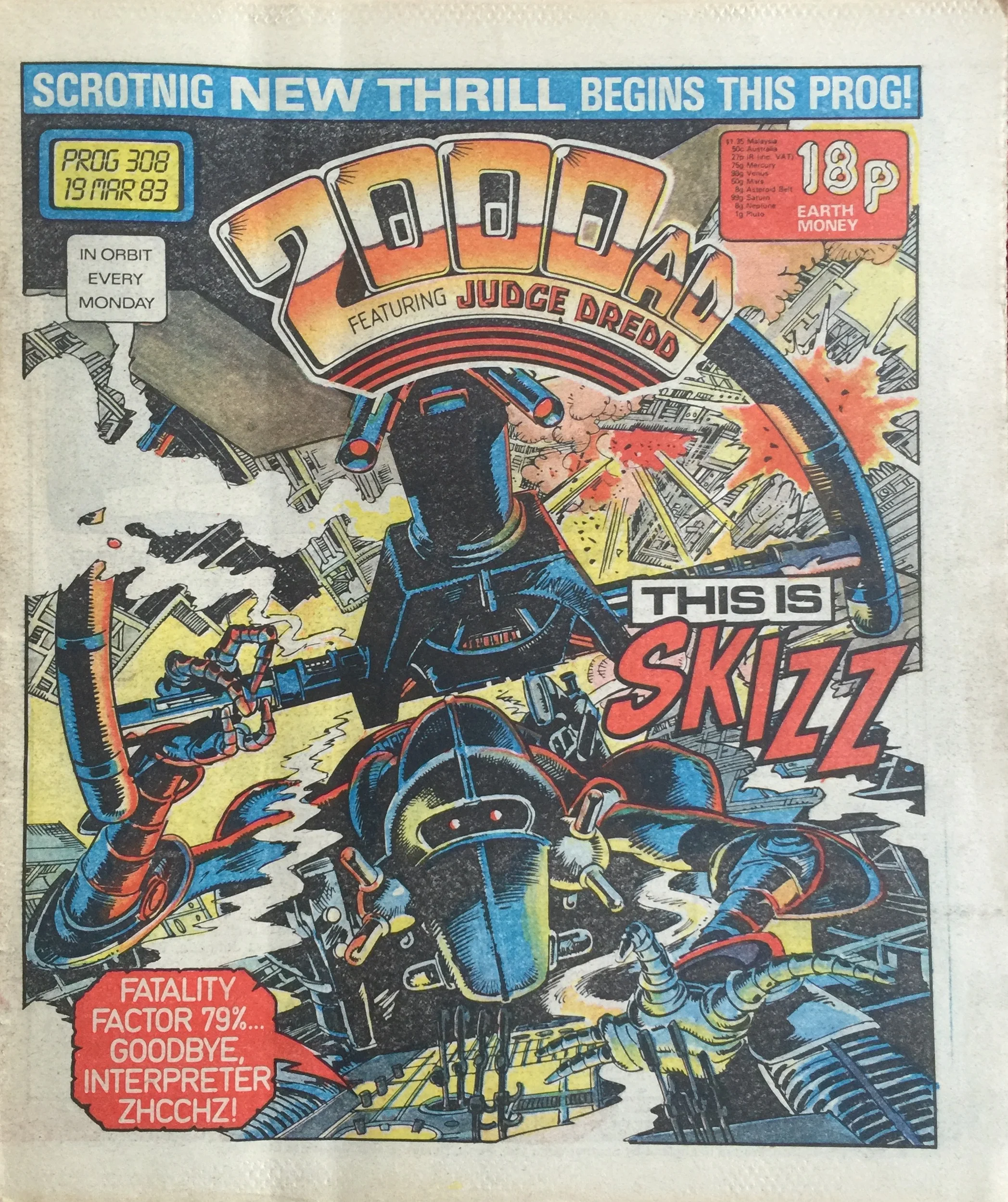On this day, 13 March 1971: Score 'n' Roar
Cover artwork: artist unknown
On this day, 13 March 1971 … I don’t seem to get as much response to my posts on football comics as to most of the other genres, presumably because they’re just not in fields of interest to the majority of Great News for All Readers! readers, but I’ll keep on with them from time to time because they do hold a particular fascination for me, and also because they clearly represented a major segment of IPC’s comics output. Of course, it might also be because it’s difficult to find much that is new to say about football comics from the 1970s and 1980s in general; one either likes them or not, but they do tend to be rather formulaic. Even those long-running stories like Roy of the Rovers, Hot-shot Hamish, Nipper and Billy’s Boots tend to have a fairly repetitive season-by-season rhythm to them, with little changing but the fashions of kits and haircuts (I’m sure those who don’t like real-world football might say that’s a fairly good description of the whole thing).
Tropes of comics football include:
Nice boys
The Hard Man: Doug Maxted (artist)
There’s generally a clean-cut, back-slapping, articulate, smiley camaraderie among professional footballers, and not very much heavy-drinking, Lamborghini-smashing, dentist’s chairing, vowel-demolishing, pack-hunting of women, fire-extinguishing of Pizza Huts or other high jinks that we know and love from the modern game.
Unlikely comebacks (aka ‘Roy of the Rovers’ stuff)
Roy of the Rovers: David Sque (artist)
Three-nil down, three-four up. Admittedly not so unlikely in recent years, particularly this season’s Premier League which is as unpredictable as Hamish’s uncle’s goat, but when I was a lad in the functional 1970s and 1980s whoever socred first would usually end up the winner, and probably by that solitary goal (admittedly I’m an Arsenal fan, but it was true for most other teams as well).
Huge crowds
Billy's Boots: artist unknown
Even for schoolboy games like this one for Bily Dane. Usually just great masses of beige peppered with the odd scarf or banner.
Escher-like pitch dimensions
The Hard Man: Doug Maxted
With very few exceptions, it seems to have been a struggle for illustrators to realistically represent the on-pitch action. Racey’s Rocket was often spoiled for me by the fact that Roy never seemed to be more than a few yards from the goal when he screamed one into the corner. I don’t mean to suggest that most artists’ work isn’t incredibly good, by the way – Yvonne Hutton, Julio Schiaffino, Joe Colquhoun, David Sque, Solano Lopez, John Gillatt, Mike Western, Barrie Mitchell, Mike White are just a few of the prodigious talents from these years, but I think their strengths were a more impressionistic realisation of the action (which most comics work is anyway) rather than in dimensionally-accurate realism.
Fast-talkin’ fans
Roy of the Rovers: David Sque
I’m sure there’s some Einsteinian theory to explain this but it always bothered my literal young mind that fans were able to provide detailed commentary on the action (sometimes conversationally with other fans sitting several seats and rows apart) all in the same split-second moment that said action took place on the pitch. And without saying ‘fackin’ either.
But … but … I loved the football comics. I still do! Football is a stage of infinite possibility on which millions of pre-adolescent fantasies (some concerned with heroism, physical success and achievement against the odds, others concerned with mathematical projections, unfeasible angles and statistical probabilities) have been dreamed, and some of those fantasies stay with us for life. Football comics – while predictable and familiar – told us, and still do, that it’s fine to believe.
Today’s comic is a lovely-looking issue of Score ‘n’ Roar, which ran from September 1970 to June 1971, before merging into Scorcher (having first folded into itself, as Lew Stringer amusingly noted, by abandoning its original two-comics-in-one format). It originally exploited nicer paper and printing processes than the likes of Scorcher to have a magazine-like appearance (the photographic covers of earlier issues looked more like Shoot than a comic), but 13 March 1971 was the first cover to lead with cartoon artwork. There are still a good number of photos and pin-ups inside, however, including a formidable West Ham team containing the likes of Moore, Hurst, Greaves, Bonds, Brooking, Redknapp and Lampard.
Nipper is Score ‘n’ Roar’s most famous son but at the time it tended to showcase its two stories about brothers playing for rival clubs in the same city, Jack of United and Jimmy of City, which dovetailed with each other each week. Other strips included Cannonball Craig, whose grandpa’s bubble-and-squeak gave him a right-footed super-shot, Peter the Cat, about a young lad following in his father’s footsteps (or, rather, arm-stretched leaps) as a talented goalie, Phantom of the Forest, about the modern-day reincarnation of a team’s greatest-ever player, and Lord Rumsey’s Rovers, about a hard-up toff who forms a football club to play on his polo lawn in an effort to make ends meet.
Jack of United: Barrie Mitchell (artist)
Jack of United: Barrie Mitchell (artist)
Cannonball Craig: Mike Western (artist)
Cannonball Craig: Mike Western (artist)
Peter the Cat: Tom Kerr (artist). Peter's new school head Mr Strangely appears to be played by Roger Delgado, aka The Master, who had recently made his debut in Doctor Who.
Peter the Cat: Tom Kerr (artist)
Jimmy of City: Barrie Mitchell (artist)
Jimmy of City: Barrie Mitchell (artist)
Phantom of the Forest: Jesus Blasco? (artist)
Phantom of the Forest: Jesus Blasco? (artist)
Nipper: Tom Tully (writer), Solano Lopez (artist)
Nipper: Tom Tully (writer), Solano Lopez (artist)
‘Give it to Gregory!’: John Stokes? (artist)
Lord Rumsey’s Rovers: Fred Baker (writer), Josep Marti (artist)
Lord Rumsey’s Rovers: Fred Baker (writer), Josep Marti (artist)
Not sure about this Leicester City outfit. They'll never win anything, surely?



